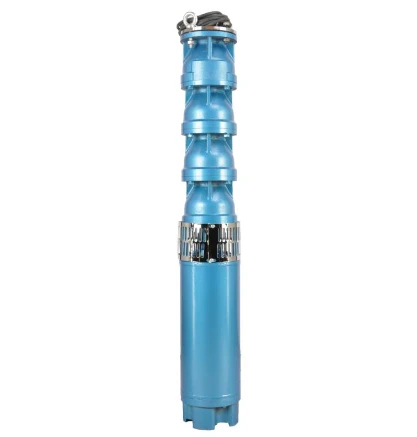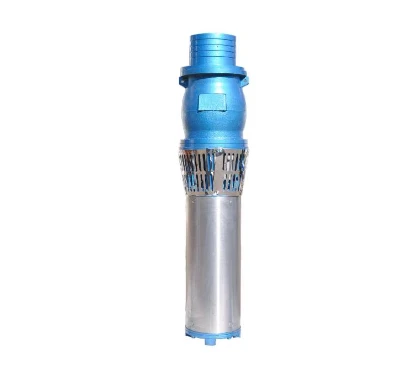Dec . 28, 2024 15:55 Back to list
submersible water pump deep well
Submersible Water Pump for Deep Wells An Essential Tool for Efficient Water Extraction
In today’s world, water scarcity is a pressing concern, particularly in areas dependent on deep wells for their water supply. The efficient extraction of groundwater is paramount, and this is where submersible water pumps come into play. These devices are specially designed for pumping water from deep underground sources, making them instrumental in agricultural, industrial, and residential applications. This article delves into the workings of a submersible water pump for deep wells, its advantages, and maintenance tips.
What is a Submersible Water Pump?
A submersible water pump is a type of pump that is wholly submerged in the fluid it is intended to pump. Unlike standard pumps, which draw water out from above the ground, submersible pumps are positioned deep within the well. This design is particularly beneficial for deep well applications, as it minimizes the risk of air lock and allows for greater efficiency in water extraction. The submersible pump operates by converting electrical energy into hydraulic energy, enabling it to push water to the surface through a series of pipes.
Key Components
A typical submersible water pump consists of several key components the motor, impeller, diffuser, and the discharge head. The motor is sealed to prevent water intrusion and is usually cooled by the water surrounding it. The impeller, typically designed with multiple vanes, pushes water to the surface, while the diffuser helps to convert kinetic energy into pressure. The discharge head is where the water exits the pump and is directed through piping to its destination. These components work synergistically to ensure the efficient operation of the pump.
Advantages of Submersible Water Pumps
1. Efficiency Submersible pumps are designed to operate at higher efficiencies compared to surface pumps, particularly when used in deep wells. Their position below the water level eliminates issues related to suction lift, allowing for smoother operation.
2. Space-Saving Design Since submersible pumps are submerged, they require less above-ground space, making them ideal for locations where surface area is limited.
3. Reduced Noise Operating below the surface, submersible pumps are quieter than their surface counterparts. This makes them suitable for residential areas and places where noise reduction is important.
submersible water pump deep well

4. Durability Many submersible pumps are constructed with corrosion-resistant materials, allowing them to withstand harsh conditions and extend the lifespan of the unit.
5. Versatility Submersible pumps can handle various liquids, including clean water, wastewater, and even slurry, depending on their design. This versatility makes them suitable for multiple applications beyond mere water extraction, such as drainage and irrigation.
Maintenance Tips
Maintaining a submersible water pump is critical for ensuring its longevity and optimal performance. Here are some essential maintenance tips
- Regular Inspections Periodically check the pump for signs of wear and tear. Look for leaks, corrosion, and unusual noises that might indicate a malfunction.
- Clean the Well To prevent sediment from entering the pump, ensure the well is clean. This not only extends the life of the pump but also improves water quality.
- Monitor Performance Keep an eye on the pump's discharge rate. A significant decrease may indicate issues such as clogging or wear in the impeller or motor.
- Annual Servicing Consider scheduling professional servicing annually. A technician can perform a thorough inspection and address any potential issues before they become major problems.
Conclusion
Submersible water pumps are pivotal in efficiently extracting water from deep wells, providing an invaluable resource to areas reliant on groundwater. Their numerous advantages, coupled with proper maintenance, ensure they remain a crucial tool in water management strategies. As global water challenges continue to evolve, technology like submersible pumps will play an increasingly vital role in sustainable resource management.
-
Submersible Well Pumps Buying Guide
NewsMay.14,2025
-
Submersible Sump, Dirty Water, Borehole Pumps Demystified
NewsMay.14,2025
-
Stainless Steel Submersible Pumps Superior Performance
NewsMay.14,2025
-
High Flow Submersible Well Pumps Essential Features
NewsMay.14,2025
-
Choosing the Best Stainless Well Pump
NewsMay.14,2025
-
A Comparison of Submersible Pumps Filled with Water and Oil
NewsMay.14,2025
-
 Submersible Well Pumps Buying GuideReliable access to clean water is fundamental for residential, agricultural, and commercial operations, making the selection of an appropriate well pump system one of the most important infrastructure decisions.Detail
Submersible Well Pumps Buying GuideReliable access to clean water is fundamental for residential, agricultural, and commercial operations, making the selection of an appropriate well pump system one of the most important infrastructure decisions.Detail -
 Submersible Sump, Dirty Water, Borehole Pumps DemystifiedThe world of water management has undergone a technological revolution, with advanced pumping systems now offering unprecedented efficiency and reliability across diverse applications.Detail
Submersible Sump, Dirty Water, Borehole Pumps DemystifiedThe world of water management has undergone a technological revolution, with advanced pumping systems now offering unprecedented efficiency and reliability across diverse applications.Detail -
 Stainless Steel Submersible Pumps Superior PerformanceModern water extraction and fluid handling systems demand equipment capable of withstanding harsh environments while maintaining peak efficiency.Detail
Stainless Steel Submersible Pumps Superior PerformanceModern water extraction and fluid handling systems demand equipment capable of withstanding harsh environments while maintaining peak efficiency.Detail
